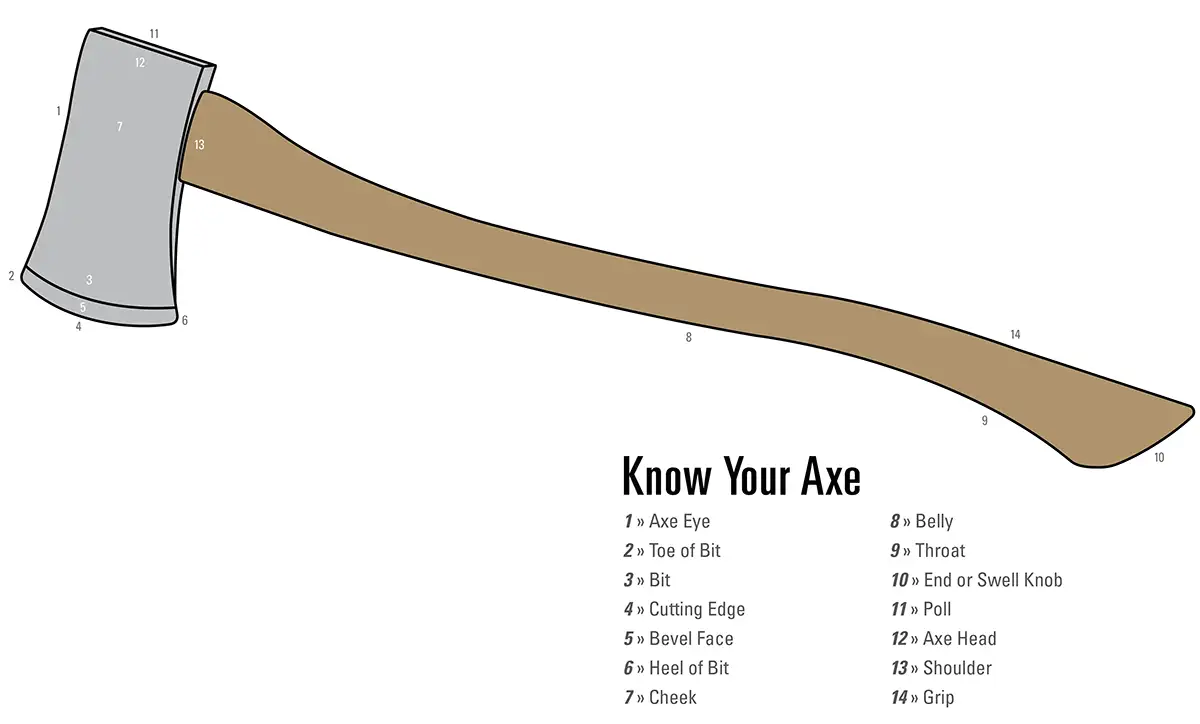The Anatomy of an Axe
The axe seems a deceptively simple tool. There is a steel axe head attached to a wooden handle. What more do you need to know?!
Well, there’s actually a lot.
Let’s get started with the different parts of the axe and why each is important to its proper function.
Parts of an Axe

Types of Axes
There are two basic types of axes: single bit and double bits. Each of these have numerous patterns too. See there is more to learn!
Learn more about the Types of Axes
Axe Patterns
For each of these types of axes there are also many, many patterns. At one point there were more than 100 of these axe patterns. Some were dictated by use like a fireman’s axe, some by the type of wood in a geographic area like Puget Sound double bits, and some to exploit an innovation to strengthen the axe head like the Baltimore-Jersey pattern.
And of course, Maine had its own pattern – the Maine wedge which is the pattern for our Allagash Cruiser, Dirigo Belt Axe, and Forester’s Friend double bit cruiser.
Axe Handles
And what about the handle? There are also different types of handles for different uses. There are plenty of arguments about what the best wood is for axe handles, how grain orientation and run-out affect performance and strength, and the best shape and end to the handle (fawns foot anyone?).